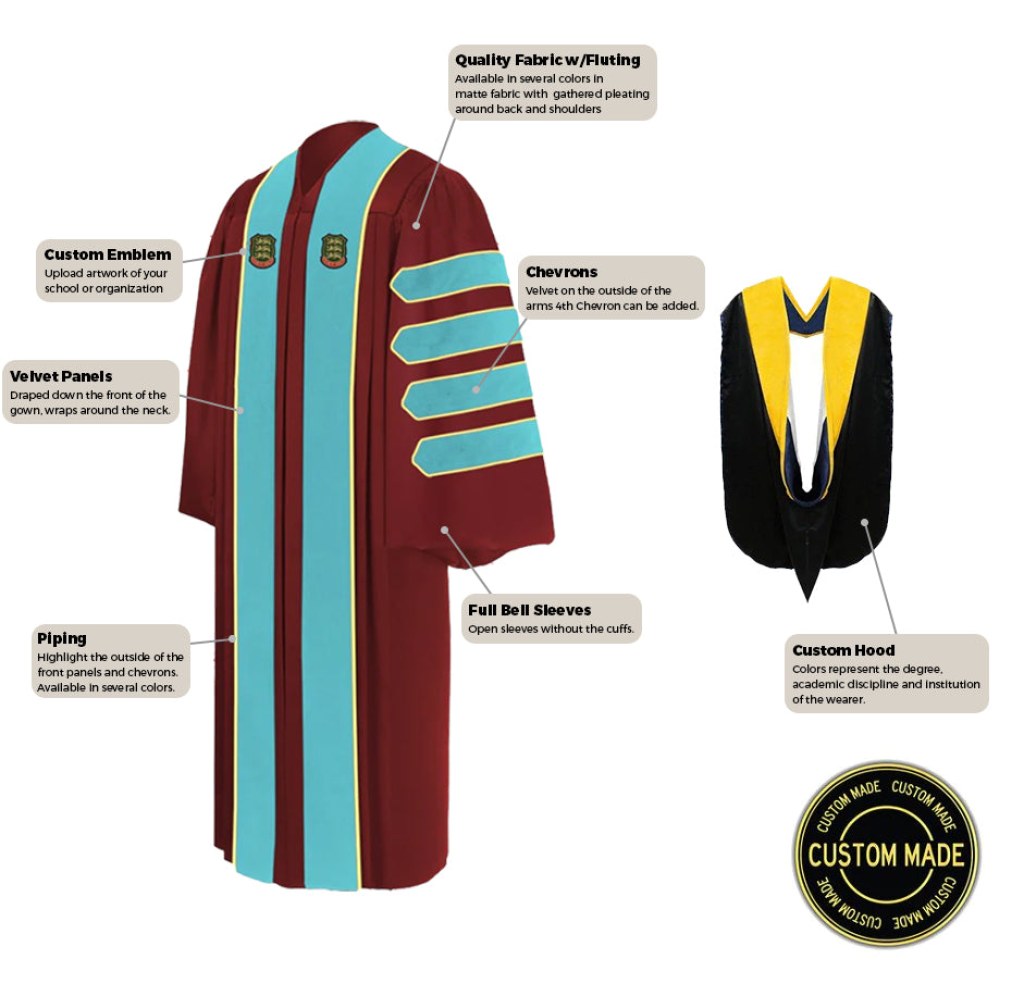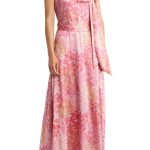Unveiling The Secrets: Discover What Material Is A Graduation Gown Made Of!
What Material is a Graduation Gown Made Of?
Introduction
Dear Fashion Enthusiast,
2 Picture Gallery: Unveiling The Secrets: Discover What Material Is A Graduation Gown Made Of!


Welcome to our informative article on the material composition of graduation gowns. As a fashion lover, we understand your curiosity about the fabrics used in designing these iconic ceremonial outfits. In this article, we will delve into the details of what materials graduation gowns are made of, exploring their origins, significance, and more. So, let’s embark on this fascinating journey together and uncover the secrets behind these elegant academic garments.
What is a Graduation Gown?

Image Source: academichoods.com
🎓 Before we dive into the materials, let’s first understand what a graduation gown is. A graduation gown, also known as an academic or commencement robe, is a traditional attire worn by graduates during graduation ceremonies. It is a symbol of accomplishment and represents the academic achievements of the individual.
🎓 Graduation gowns are typically worn over formal clothing and come in various styles, lengths, and colors depending on the educational institution and degree level. While the aesthetics of graduation gowns may vary, the materials used in their production remain relatively consistent.
Materials Used in Graduation Gowns

Image Source: homeschooldiploma.com
🎓 Now, let’s explore the materials commonly used in the production of graduation gowns:
Material
Description
1. Polyester
Polyester is a synthetic fabric known for its durability and wrinkle resistance. It is commonly used in graduation gowns due to its affordability and ease of maintenance.
2. Satin
Satin is a smooth and lustrous fabric that adds a touch of elegance to graduation gowns. It is often used for the trimmings, such as the collar, cuffs, and hoods.
3. Velvet
Velvet is a luxurious fabric with a soft and plush texture. It is occasionally used in graduation gowns to create a regal and distinguished look.
4. Cotton
Cotton is a natural fiber known for its breathability and comfort. It is sometimes blended with other materials to enhance the overall quality and feel of the graduation gowns.
5. Rayon
Rayon is a semi-synthetic fabric that combines the comfort of natural fibers with the affordability of synthetic materials. It is often used as a substitute for silk.
6. Triacetate
Triacetate is a synthetic fabric known for its excellent drape and resistance to shrinkage. It is commonly used in graduation gowns to ensure a flattering fit.
What?
🎓 What refers to the specific materials used in the construction of graduation gowns. As mentioned earlier, polyester, satin, velvet, cotton, rayon, and triacetate are the most commonly employed fabrics in the production of these ceremonial robes.
🎓 Each material offers unique characteristics and contributes to the overall look and feel of the graduation gown. The combination of these materials creates a garment that is comfortable, durable, and visually appealing.
Who?
🎓 Who pertains to the individuals involved in the creation of graduation gowns. While specific manufacturers may vary, the process typically involves skilled designers, tailors, and textile experts. These professionals collaborate to ensure the use of high-quality materials and impeccable craftsmanship in the production of each graduation gown.
🎓 Additionally, educational institutions and academic organizations play a significant role in determining the design and material specifications of the graduation gowns used during their ceremonies.
When?
🎓 When signifies the timeline associated with the materials used in graduation gowns. The usage of polyester, satin, velvet, cotton, rayon, and triacetate has remained consistent over the years, with minor modifications and advancements in fabric technology to improve their quality and durability.
🎓 The tradition of wearing graduation gowns dates back centuries, and while the fabrics may have evolved, the essence and significance of these garments remain timeless.
Where?
🎓 Where refers to the geographical regions where the materials for graduation gowns are sourced. As these fabrics are produced globally, the specific locations may vary. Polyester, for instance, is commonly manufactured in countries like China, India, and the United States.
🎓 Similarly, satin, velvet, cotton, rayon, and triacetate are produced in various regions around the world, taking advantage of the diverse textile industries and resources available.
Why?
🎓 Why explores the reasons behind the choice of materials in graduation gowns. The selection of polyester, satin, velvet, cotton, rayon, and triacetate is driven by several factors:
🎓 1. Affordability: Polyester and rayon offer cost-effective alternatives to natural fibers like silk, making graduation gowns more accessible to a wider range of students.
🎓 2. Durability: Polyester and triacetate are known for their durability, ensuring that graduation gowns can withstand the test of time and multiple wearings.
🎓 3. Aesthetics: Fabrics like satin and velvet enhance the visual appeal of graduation gowns, adding an element of sophistication and elegance.
🎓 4. Comfort: Cotton and rayon provide breathability and comfort, ensuring that graduates can move and celebrate their achievements with ease during graduation ceremonies.
🎓 5. Practicality: The materials used in graduation gowns are chosen for their ease of maintenance, allowing for simple cleaning and long-term preservation.
How?
🎓 How signifies the manufacturing process of graduation gowns. The selected materials are carefully cut and sewn together, taking into account the design specifications and measurements. Skilled tailors and seamstresses ensure the precise assembly of each gown, paying attention to details such as hems, linings, and closures.
🎓 Quality control measures are implemented throughout the production process to maintain the standards of the graduation gowns, resulting in high-quality garments ready to be worn by proud graduates.
Advantages and Disadvantages
🎓 Let’s now explore the advantages and disadvantages of using polyester, satin, velvet, cotton, rayon, and triacetate in the production of graduation gowns:
Advantages:
1. Polyester: This material offers affordability, durability, and easy maintenance.
2. Satin: Satin adds elegance and lustrous appeal to graduation gowns, enhancing their overall aesthetic.
3. Velvet: The use of velvet creates a luxurious and distinguished look, perfect for special academic occasions.
4. Cotton: Cotton provides breathability and comfort, ensuring that graduates can celebrate without discomfort.
5. Rayon: Rayon combines the benefits of natural fibers and affordability, making it a practical choice for graduation gowns.
Disadvantages:
1. Polyester: While polyester is durable, it is not as breathable as natural fibers like cotton.
2. Satin: Satin requires delicate care and can be prone to snagging or wrinkling if not handled properly.
3. Velvet: Velvet may require extra care due to its delicate texture and potential for attracting lint or dust.
4. Cotton: Cotton, although breathable, can wrinkle easily and may require ironing or steaming before wearing.
5. Rayon: Rayon may not possess the same level of durability as polyester or other synthetic fibers.
FAQs (Frequently Asked Questions)
🎓 Here are some frequently asked questions about the material composition of graduation gowns:
1. Are graduation gowns only made of polyester?
No, graduation gowns are made from a variety of materials, including polyester, satin, velvet, cotton, rayon, and triacetate. The specific blend of materials depends on the desired attributes and design of the gown.
2. Can graduation gowns be customized with different materials?
Yes, some educational institutions or individual graduates may choose to customize their graduation gowns with different materials to suit their preferences or signify specific achievements. However, the majority of standard graduation gowns use the materials mentioned earlier.
3. Do different degree levels have different materials in their graduation gowns?
While the materials used in graduation gowns can vary, it is more common for the design and color of the gown to change with different degree levels, rather than the materials themselves.
4. Are there any eco-friendly alternatives for graduation gown materials?
Yes, sustainable and eco-friendly options are becoming more prevalent in the fashion industry. Some manufacturers offer graduation gowns made from recycled materials or organic fabrics to promote sustainability.
5. Can I wash my graduation gown at home?
It is recommended to follow the care instructions provided with your graduation gown. While some gowns can be washed at home, others may require professional dry cleaning to maintain their quality and appearance.
Conclusion
🎓 In conclusion, graduation gowns are made from various materials such as polyester, satin, velvet, cotton, rayon, and triacetate. Each material contributes to the overall look, comfort, and durability of the gown. Polyester offers affordability, while satin and velvet add elegance and sophistication. Cotton and rayon provide breathability and comfort, ensuring a pleasant experience during graduation ceremonies. While each material has its advantages and disadvantages, the combination of these fabrics results in a well-crafted and symbolic garment that represents academic achievements.
🎓 So, whether you’re a graduate preparing for your big day or simply curious about the materials used in graduation gowns, we hope this article has provided valuable insights. Celebrate your accomplishments proudly, knowing that your graduation gown is not only a symbol of success but also a testament to the craftsmanship and materials that went into its creation.
Final Remarks
🎓 Dear Fashion Styler,
Thank you for joining us on this exploration of the materials used in graduation gowns. We hope you found this article informative and engaging. As fashion enthusiasts, it’s important to appreciate the craftsmanship and significance behind every garment we wear, including the iconic graduation gown.
🎓 Please note that the specific materials and design of graduation gowns may vary depending on educational institutions and cultural customs. Additionally, advancements in fabric technology and sustainability practices may lead to future innovations in the materials used for graduation gowns.
🎓 As you continue to indulge in the world of fashion, we encourage you to explore the stories behind each outfit and celebrate the artistry that goes into creating them. Stay stylish and never stop seeking knowledge!
This post topic: Gown


